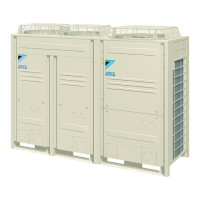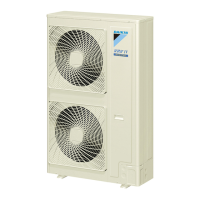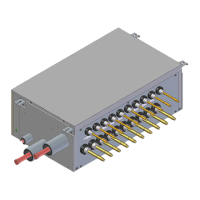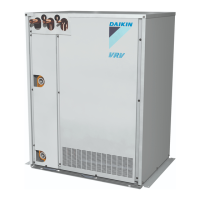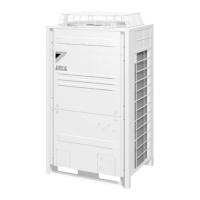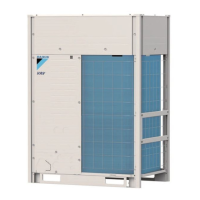Installation Si39-303
30 General Information
Checking for
Leaks
[Check 1] (Where pressure falls while carrying out Steps 1 to 3 described on previous page)
!
Check by ear......Listen for the sound of a major leak.
!
Check by hand......Check for leak by feeling around jointed sections with hand.
!
Soap and water check (
∗
Snoop)......Bubbles will reveal the presence of a leak.
[Check 2] (When searching for a minor leak or when there has been a fall in pressure while the system has
been fully pressurized but the source of the leak cannot be traced.)
1. Release the nitrogen until the pressure reaches 0.3MPa.
2. Increase pressure to 1.5MPa using gaseous flon gas (R410A). (Nitrogen and flon gas mixed)
3. Search for the source of the leak using a leak detector.
4. If the source of the leak still cannot be traced then repressurize with nitrogen up to 3.80MPa and check
again. (The pressure must not be increased to more than 3.80MPa.)
Setup of Air-light Test
As for the air-tight test, the setup of devices shown in the following figure is recommended with
considerations given to “vacuum drying and refrigerant additional charging”, which are operation
steps following the air-tightness test.
In order to conduct the air-tight test, with stop valves of 8.Gas side, 10.liquid side and 15.Oil
equalization piping and those of the refrigerant and vacuum pump all closed, then open the
nitrogen gas stop valve, 7.Valve A, and 16.Valve B while adjusting the nitrogen gas pressure
regulating valve, thus increasing the pressure.
One outdoor unit installed: In case of RXYQ5-16MY1B
1.Pressure reducing valve
2.Nitrogen
3.Refrigerant cylinder
4.Siphon system
5.Measuring instrument
6.Vacuum pump
7.Valve A
8.Gas side
9.Outdoor unit
10.Liquid side
11.Indoor unit
12.Shutoff valve service port
13.Charge hose
14.To indoor unit
15.Oil-equalizing line
16.Valve B
17.Dotted lines represent onsite piping
!
Important points
1. Where the lengths of piping involved are particularly long then the air tight test should be carried out
block by block.
Example:
1. Indoor side
2. Indoor side + vertical pipes
3. Indoor side + vertical pipes + outdoor side
1
1
2
2
3
3
4
4
5
5
6
6
7
7
13
12
14
8
9
9
8
9
10
10
15
11
12
17
16
17
13
When multiple outdoor units installed:
In case of RXYQ18-48MY1B

